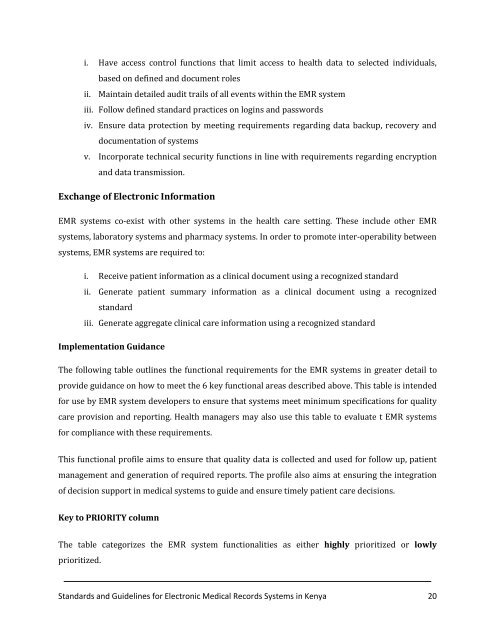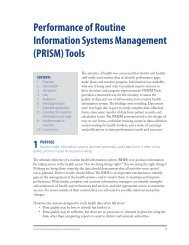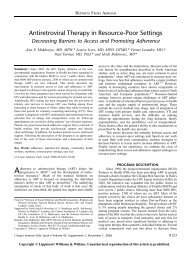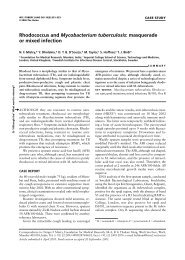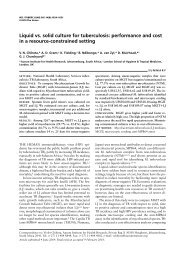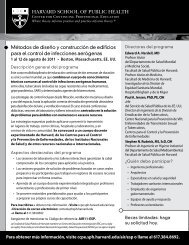Standards and Guidelines for Electronic Medical Record Systems in ...
Standards and Guidelines for Electronic Medical Record Systems in ...
Standards and Guidelines for Electronic Medical Record Systems in ...
You also want an ePaper? Increase the reach of your titles
YUMPU automatically turns print PDFs into web optimized ePapers that Google loves.
i. Have access control functions that limit access to health data to selected <strong>in</strong>dividuals,<br />
based on def<strong>in</strong>ed <strong>and</strong> document roles<br />
ii. Ma<strong>in</strong>ta<strong>in</strong> detailed audit trails of all events with<strong>in</strong> the EMR system<br />
iii. Follow def<strong>in</strong>ed st<strong>and</strong>ard practices on log<strong>in</strong>s <strong>and</strong> passwords<br />
iv. Ensure data protection by meet<strong>in</strong>g requirements regard<strong>in</strong>g data backup, recovery <strong>and</strong><br />
documentation of systems<br />
v. Incorporate technical security functions <strong>in</strong> l<strong>in</strong>e with requirements regard<strong>in</strong>g encryption<br />
<strong>and</strong> data transmission.<br />
Exchange of <strong>Electronic</strong> In<strong>for</strong>mation<br />
EMR systems co-exist with other systems <strong>in</strong> the health care sett<strong>in</strong>g. These <strong>in</strong>clude other EMR<br />
systems, laboratory systems <strong>and</strong> pharmacy systems. In order to promote <strong>in</strong>ter-operability between<br />
systems, EMR systems are required to:<br />
i. Receive patient <strong>in</strong><strong>for</strong>mation as a cl<strong>in</strong>ical document us<strong>in</strong>g a recognized st<strong>and</strong>ard<br />
ii. Generate patient summary <strong>in</strong><strong>for</strong>mation as a cl<strong>in</strong>ical document us<strong>in</strong>g a recognized<br />
st<strong>and</strong>ard<br />
iii. Generate aggregate cl<strong>in</strong>ical care <strong>in</strong><strong>for</strong>mation us<strong>in</strong>g a recognized st<strong>and</strong>ard<br />
Implementation Guidance<br />
The follow<strong>in</strong>g table outl<strong>in</strong>es the functional requirements <strong>for</strong> the EMR systems <strong>in</strong> greater detail to<br />
provide guidance on how to meet the 6 key functional areas described above. This table is <strong>in</strong>tended<br />
<strong>for</strong> use by EMR system developers to ensure that systems meet m<strong>in</strong>imum specifications <strong>for</strong> quality<br />
care provision <strong>and</strong> report<strong>in</strong>g. Health managers may also use this table to evaluate t EMR systems<br />
<strong>for</strong> compliance with these requirements.<br />
This functional profile aims to ensure that quality data is collected <strong>and</strong> used <strong>for</strong> follow up, patient<br />
management <strong>and</strong> generation of required reports. The profile also aims at ensur<strong>in</strong>g the <strong>in</strong>tegration<br />
of decision support <strong>in</strong> medical systems to guide <strong>and</strong> ensure timely patient care decisions.<br />
Key to PRIORITY column<br />
The table categorizes the EMR system functionalities as either highly prioritized or lowly<br />
prioritized.<br />
<strong>St<strong>and</strong>ards</strong> <strong>and</strong> <strong>Guidel<strong>in</strong>es</strong> <strong>for</strong> <strong>Electronic</strong> <strong>Medical</strong> <strong>Record</strong>s <strong>Systems</strong> <strong>in</strong> Kenya 20


